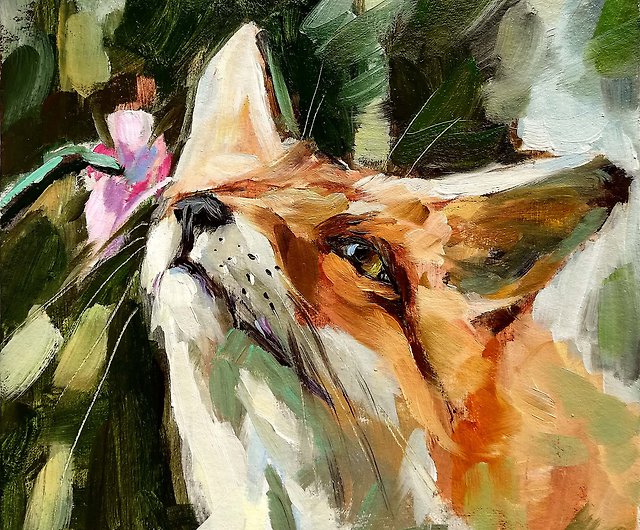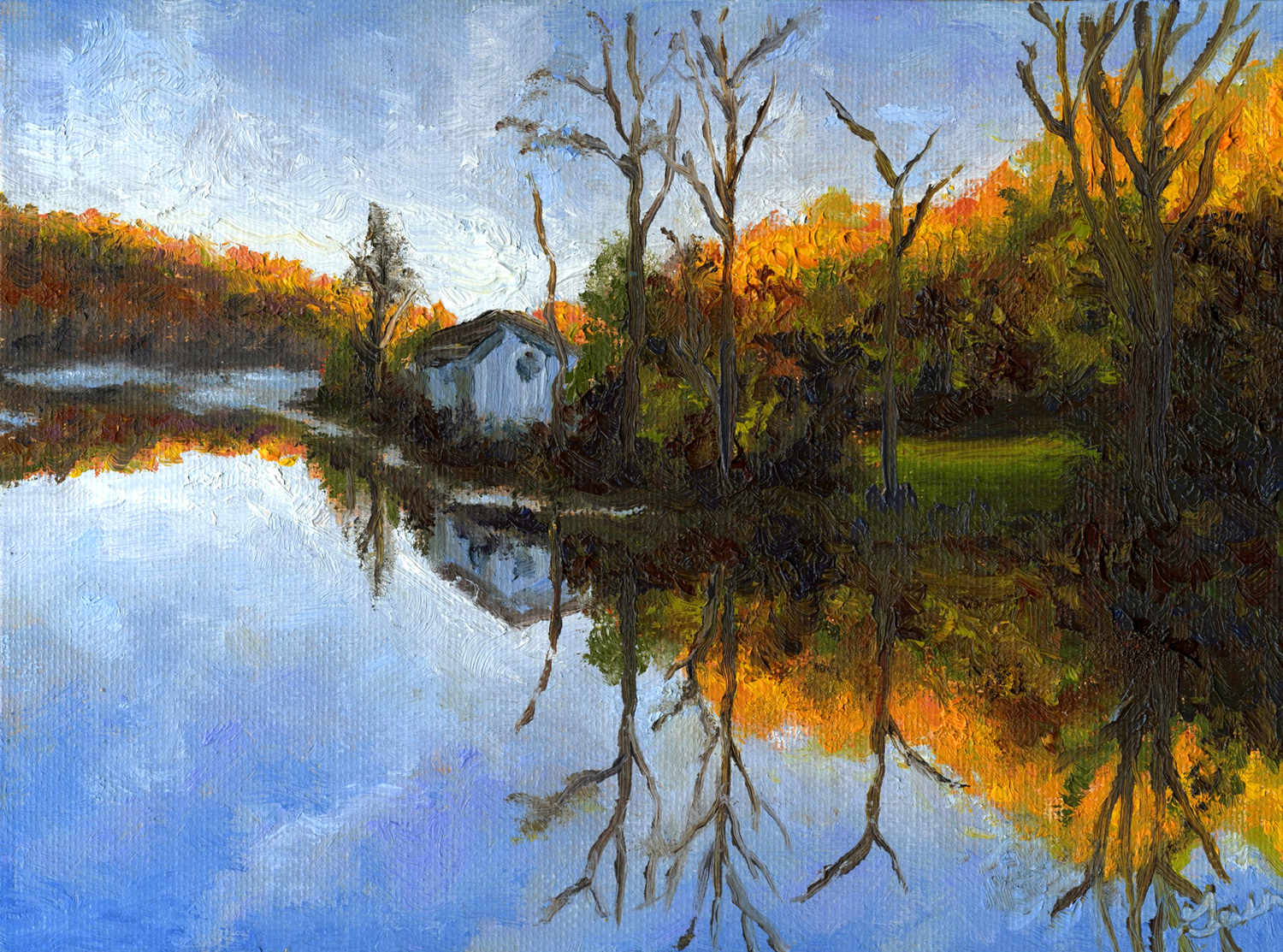Oil Paintings for Sale to Enhance Any Interior Space
Oil Paintings for Sale to Enhance Any Interior Space
Blog Article
Discovering Everything About Oil Paintings: An Overview to Understanding Their Charm and Value
Oil paints have captivated audiences for centuries, using a look into the artistic mastery of numerous ages. Their rich background is linked with ingenious techniques and extensive psychological expression. Comprehending the materials and techniques behind these artworks can enhance recognition. In addition, the market for oil paintings provides opportunities for collectors and investors alike. As one discovers this fascinating world, the concern arises: what makes an oil paint truly useful?
The Background of Oil Painting: A Journey Via Time
Oil paint has roots that date back to ancient times, it really prospered throughout the Renaissance, when artists discovered its flexibility and abundant color potential. Early instances can be mapped to the 7th century, with methods advancing significantly across cultures. The medium came to be prominent in Northern Europe in the 15th century, particularly via the works of musicians like Jan van Eyck, that pioneered its use for detailed realistic look and vivid hues. This period marked a departure from tempera paints, enabling higher depth and appearance. As oil painting spread, it affected many artists, resulting in masterpieces by prominent numbers such as Leonardo da Vinci and Rembrandt. The medium's tradition proceeds, shaping the art world well into contemporary times.
Comprehending Oil Paints: Materials and Techniques
As artists discover the world of oil paints, they experience a diverse array of materials and techniques that define this medium. The key components of oil paint consist of pigments, which supply shade, and drying oils, such as linseed, that bind the pigments and promote application. Different additives can modify the paint's appearance and drying time, enhancing convenience. Techniques like glazing, where clear layers are accumulated, and impasto, which involves using thick paint, enable for various aesthetic effects. Furthermore, making use of brushes, scheme blades, and also fingers can produce distinct appearances and surfaces. Understanding these strategies and products makes it possible for musicians to fully express their creativity and accomplish the desired impact in their artwork.
The Duty of Shade in Oil Paintings
Shade plays a pivotal duty in oil paintings, affecting both aesthetic allure and psychological resonance. Understanding shade theory basics, consisting of the relationships between colors, can boost a musician's capacity to convey state of mind and environment. Furthermore, understanding shade mixing techniques allows for higher deepness and richness in a painting's palette.

Shade Concept Fundamentals
Understanding color theory is necessary for musicians dealing with oil paints, as it develops the structure for producing aesthetically appealing and harmonious make-ups. Shade concept encompasses the research study of exactly how shades communicate, the color wheel, and the connections in between primary, additional, and tertiary colors. Musicians make use of complementary shades to boost contrasts and develop centerpieces, while analogous colors promote unity and cohesiveness within an item. In addition, the principles of great and cozy shades influence the perception of deepness and space in a paint. Realizing these concepts allows artists to manipulate color efficiently, directing the visitor's eye and connecting their desired message. Proficiency of shade theory eventually enriches an artist's capability to convey emotions and ideas through their work.
Emotional Impact of Shade
The psychological impact of shade in oil paintings plays an important role in exactly how viewers link and regard with artwork. Colors stimulate certain sensations and state of minds, affecting the viewer's emotional state. Cozy tones like oranges and reds can produce a sense of warmth and power, while great tones such as blues and environment-friendlies usually stimulate calmness or self-contemplation. Artists purposefully select color palettes to enhance narrative elements, directing the target market's psychological trip. The saturation and contrast of shades additionally amplify these results, drawing focus and developing emphasis. Ultimately, the interplay of colors in oil paints not just improves their visual appeal however also works as a powerful tool for emotional expression, enriching the audience's experience and analysis.
Color Combining Techniques
While numerous aspects of oil painting add to the total composition, understanding shade blending techniques is vital for achieving wanted impacts and deepness. Color mixing can be come close to via different methods, including the additive and subtractive procedures. Additive mixing includes integrating shades of light, while subtractive mixing counts on pigments, where colors mix to create brand-new tones. Artists frequently make use of a minimal scheme to develop harmonious jobs, comprehending the relationships between main, second, and tertiary shades. Strategies such as glazing and scumbling even more boost depth and luminosity. By skillfully blending colors, an artist can stimulate feelings, develop prime focus, and accomplish a sense of realism, ultimately raising the painting's psychological and aesthetic influence.
Famous Oil Painters and Their Iconic Functions

Famed for their proficiency of shade and technique, oil painters have created some of one of the most popular artworks in history. Popular musicians like Vincent van Gogh captivated target markets with his emotive brushwork in "Starry Night," while Claude Monet's "Impression, Sunup" laid the groundwork for Impressionism. Leonardo da Vinci's "Mona Lisa" stays a long-lasting symbol of artistic brilliant, showcasing his ability in capturing human expression. Rembrandt's "The Night Watch" highlights his cutting-edge usage of light and shadow. Other notable numbers consist of Pablo Picasso, that changed contemporary art with his strong trial and error in jobs like "Les Demoiselles d'Avignon," and Georgia O'Keeffe, whose lively representations of landscapes and blossoms aided define American modernism. Each musician's unique style contributed substantially to the oil painting landscape.
Exactly how to Assess the High Quality of an Oil Painting
Assessing the high quality of an oil paint involves a careful assessment of craftsmanship techniques, along with an analysis of color and structure. Observing brushwork, layering, and the application of paint can expose the musician's skill level. Furthermore, the interplay of shades and the overall setup of components contribute significantly to the painting's visual worth.
Assessing Craftsmanship Techniques
A precise assessment of craftsmanship methods is vital for determining the quality of an oil paint. Critics need to initially analyze the application of paint; thick, textured brushstrokes might recommend a skilled hand, while extremely uniform applications can indicate a lack of depth. oil paintings for sale. The layering method is additionally crucial; the visibility of lusters and varied thickness can improve luminance and complexity. Additionally, the quality of the materials used, such as the canvas and pigments, plays a considerable role in resilience and overall visual. Attention to information in components like edges and changes in between shades mirrors the artist's dedication to their craft. Inevitably, these methods contribute to the painting's emotional influence and market value, acting as signs of the musician's skill and intent
Evaluating Color and Composition
While assessing the top quality of an oil painting, one should concentrate on the interaction of color and make-up, as these aspects are basic to the artwork's general impact. Shade selections can evoke feelings and develop state of mind; therefore, the artist's combination must be taken a look at for harmony and contrast. A well-balanced structure routes the customer's eye and creates a feeling of unity. Artists typically employ strategies like the policy of thirds or leading lines to enhance aesthetic rate of interest. Additionally, making use of light and shadow can add depth, improving the three-dimensionality of the painting. Ultimately, an effective oil paint marries color and structure, engaging the customer and inviting a deeper appreciation of the artist's vision and method.
Caring for and Preserving Oil Paintings
Appropriate care and conservation of oil paintings is necessary for maintaining their integrity and long life. To secure these artworks, it is vital to display them far from straight sunlight, which can create fading and discoloration. Maintaining a steady atmosphere with regulated temperature and moisture further aids in preventing damages. Cleaning must be done carefully making use of a soft, completely dry towel, avoiding any harsh chemicals that might harm the paint or varnish. Regular assessments for indications of wear and tear, such as breaking or flaking, are recommended. When keeping or transporting oil read more paints, proper extra padding and framework are needed to avoid physical harm. Inevitably, persistent treatment adds to the visual appeal and worth of oil paintings gradually.
The Marketplace for Oil Paints: Gathering and Spending
Comprehending the market characteristics for oil paintings is vital for financiers and collection agencies alike. The value of these artworks is influenced by various elements, including the musician's track record, historical importance, and existing trends. Collection agencies frequently seek pieces that resonate directly while thinking about possible recognition in value. Galleries and public auctions serve as main venues for trading, with costs changing based on demand and rarity. Spending in oil paints requires study right into the marketplace, in addition to an understanding of authenticity and provenance. Furthermore, emerging artists might offer chances for substantial returns, while established names can command high costs. Generally, a tactical technique to accumulating can generate both visual enjoyment and monetary rewards.

Regularly Asked Concerns
What Are the Environmental Effects of Oil Paint Products?
The ecological influences of oil paint products consist of the launch of volatile natural substances (VOCs), harmful waste generation, and source removal for pigments. These factors add to contamination and eco-friendly destruction, raising problems amongst eco aware musicians and customers.
How Do Various Canvases Impact Oil Paint Outcomes?
Various canvases influence oil paint results significantly. Absorbency, texture, and surface quality can modify paint application, drying out times, and color vibrancy. Musicians usually choose particular canvases to accomplish preferred effects and improve their imaginative expression.
Can Oil Paintings Be Brought Back if Damaged?
If damaged, Oil paints can certainly be recovered. Professional conservators use various strategies to fix splits, tidy surfaces, and address staining, ensuring that the art work preserves its original appeal and value for future generations.
What Are the Indications of an Initial Oil Paint?
The indications of an original oil painting consist of visible brush strokes, structure variations, and an unequal canvas weave (oil paintings for sale). In addition, authenticity may be confirmed with provenance, signatures, and the presence of a varnish layer one-of-a-kind to oil mediums
How Has Innovation Influenced Modern Oil Painting Techniques?
Innovation has significantly influenced modern oil paint methods by presenting electronic devices for preparation, improved products for appearance and long life, and online platforms for sharing and offering art, therefore increasing artists' imaginative possibilities and target market get to. Oil painting has roots that date back to old times, it really thrived throughout the Renaissance, when artists uncovered its versatility and abundant color possibility. The emotional influence of color in oil paintings plays a crucial role in just how audiences perceive and attach with art work. While lots of elements of oil painting contribute to the general structure, understanding shade blending techniques is vital for accomplishing desired effects and depth. Reviewing the quality of an oil painting entails a cautious assessment of workmanship strategies, as well as an analysis of shade and make-up. While evaluating the high quality of an oil painting, one should concentrate on the interaction of shade and composition, as these aspects are essential to the art work's overall effect.
Report this page